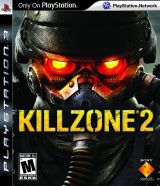We've seen and played Killzone 2 before, but that didn't keep Guerrilla Games and Sony from giving us a good reason to come back for more. During the Games Convention Killzone 2 presentation, it was announced that the game would be shipping with multiplayer bots that can be used both online and offline.
This means two things to the prospective Killzone 2 player. First, it means that even small groups of friends can take part in large-scale maps and gameplay types by simply adding bots to the experience, giving you more allies and more foes to shoot. It also means that players can completely bypass online play, while still being able to experience and have fun with the various multiplayer modes by simply adding bots to an offline game. These bots mimic human behavior, take advantage of their special abilities, and should, in theory, make decent substitutes for live human opponents and allies.
Now that we have the big announcement out of the way, we can go into the four goals for Killzone 2 that Senior Online Game Designer Eric Boltjes discussed in his presentation. These goals represent the overarching design mantra that the development team has taken to heart, and form the basis for their approach to online play.
The first goal was to make Killzone 2 a game that everyone can play. The first step in accomplishing this was to make the game easy to join, and keep it easy enough to understand for new players that it doesn't become overwhelming. Players will be brought along gradually through the game's progression system, eventually leading to enough depth for even the most hardcore. There are 12 ranks to gain and over 46 ribbons and medals to earn, conferring new abilities to the dedicated player.
The second goal was to make it so that you can play Killzone 2 the way you like. The key system behind this design philosophy is the badge system. Badges are essentially jobs or roles that you can choose from, offering different play styles for different types of gamers. Each badge, in turn, has two different abilities, one major and one minor. You can pick any badge as your primary role, and any other badge as your secondary. So if you want the Medic's ability to revive fallen allies, but also want to be able to repair turrets and ammo boxes, you can create a hybrid sort of Medic-Engineer.
We personally enjoyed playing an Engineer-Tactician. The Engineer major ability allows you to deploy sentry gun turrets, while the Tactician secondary ability allows you to drop a smoke grenade that calls in reinforcements in the form of an unmanned aerial gunship drone. Put the two together and you have a lot of mechanical firepower that can be brought to bear, in addition to your trusty shotgun.
Looking back at our hands-on experience, we could have really used the Tactician's primary ability: They're able to drop spawn points for the rest of the team, making for a great way to keep the squad together and focused on objectives.
The other contributing factor to this second goal is the broad range of game customization options. There are only eight maps, but they vary in size based on the amount of players you have, with 32 total players able to join per map. You can set up custom map queue rotations, choose what weapons are available in each round, limit what badges can be used, and also set up variable mission-type queues.
The way missions work is that you're able to set up a match so that when an initial mission is completed, the game immediately shifts to a second mission type. You can plant the charges and win a round of Search & Destroy, then immediately be tossed into an assassination mission. Complete that game, and the round will seamlessly extend into a new mission type, such as Search & Retrieve or Body Count.





